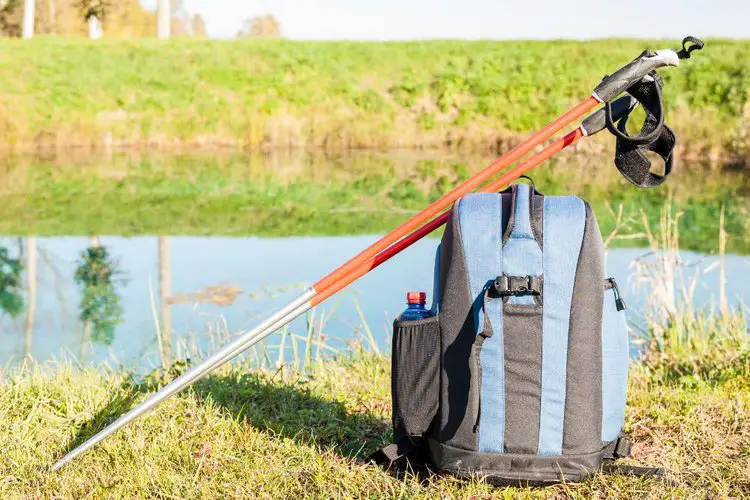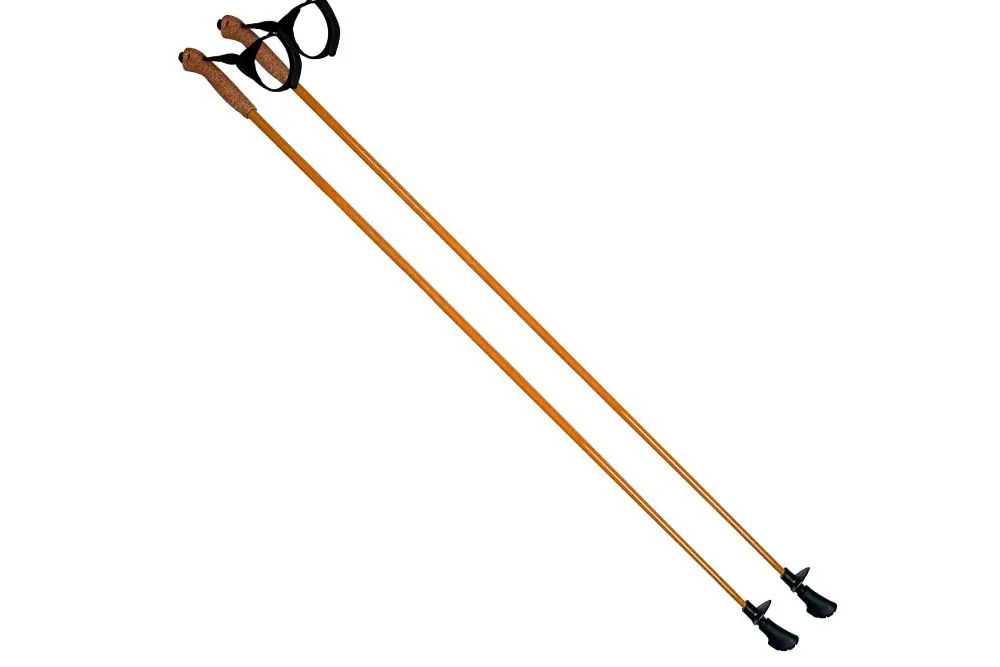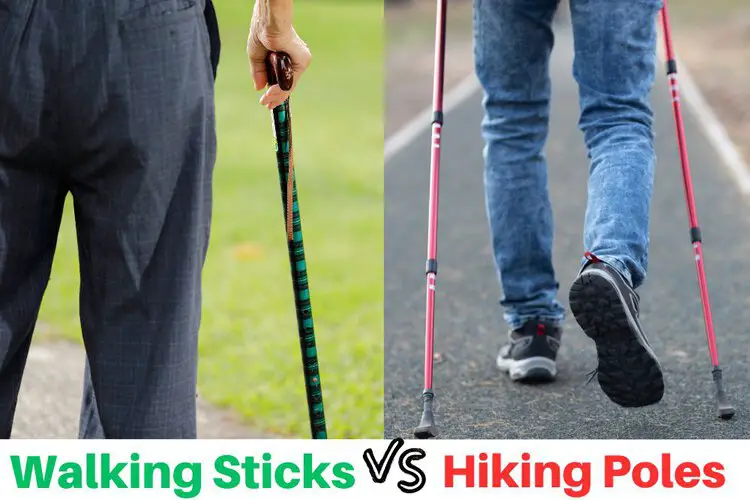Walking and hiking are great activities to help us stay healthy and active.
Whether we’re exploring trails in the wilderness or simply taking a leisurely stroll through a nearby park, having the right equipment can make all the difference.
One of the most common questions people ask is: what is the difference between a walking stick and a hiking pole?
In this article, we’ll explore the answer to this question and help you decide which one is right for your needs.
Key Takeaways:
| Features | Walking Stick | Hiking Pole |
| Purpose | Support and balance on flat terrain | Support and stability on uneven terrain |
| Length | Typically shorter, around 36-38 inches | Adjustable, can range from 24-55 inches or more |
| Weight | Can vary depending on materials used | Lightweight, often made of aluminum or carbon fiber |
| Tips | Usually a simple rubber or metal tip | Often feature replaceable tips for different terrain |
| Handles | May have a simple grip or knob at top | Ergonomic grips designed for comfort and control |
| Shock Absorbers | Rarely have shock-absorbing technology | Some models feature built-in shock absorption |
| Accessories | Often used as a fashion or status symbol | Can be outfitted with baskets, straps, and more |
| Recommended Use | Short walks, casual use | Hiking, backpacking, trekking, and mountaineering |
| Cost | Generally less expensive | Can range from budget-friendly to high-end |
| Availability | Widely available in many styles | Can be more specialized and harder to find |
Contents
What is a Walking Stick?
A walking stick, also known as a cane or trekking pole, is a long, straight stick that is used primarily for support while walking.
Walking sticks have been used for centuries by people of all ages and abilities, and they come in a variety of shapes, sizes, and materials.

Traditionally, walking sticks were made from wood, but nowadays, they can be made from a range of materials such as aluminum, carbon fiber, or fiberglass.
Walking sticks are generally used for shorter, less strenuous walks, and are particularly popular among people with joint pain or balance issues.
The stick can help distribute weight evenly and reduce the impact on joints, making walking a more comfortable and enjoyable experience.
- Folding Cane: Cutting-edge, patented technology allows the HurryCane, the #1 selling walking cane...
- Exclusive Technology: The SteadiGrip base design gives the walking stick three points of contact for...
- Adjustable Height: Customize the fit of this 3-prong cane by adjusting the handle height setting...
Last update on 2023-11-10 / Affiliate links / Images from Amazon Product Advertising API
What is a Hiking Pole?
A hiking pole, also known as a trekking pole, is a collapsible stick that is specifically designed for use during hikes and outdoor adventures.
Hiking poles are typically made from lightweight materials like aluminum, carbon fiber, or composite materials.

Hiking poles come with a range of features designed to make hiking easier and more comfortable. For example, they often have adjustable height settings, shock absorbers, and ergonomic handles. Hiking poles can also be collapsible, making them easy to transport and store when not in use.
Hiking poles are particularly popular among hikers and mountaineers because they can help improve balance, reduce fatigue, and increase traction on slippery or uneven terrain.
- Exceptional Quality and Lightweight: Better than your buddy’s average trekking poles. Crafted from...
- Quick Lock Mechanism: Designed with rugged terrain in mind. Easily adjust your trekking poles from...
- Cork Grip with Extended EVA Down Grip: Ergonomically designed for optimal performance without...
Last update on 2023-11-10 / Affiliate links / Images from Amazon Product Advertising API
They can also be used to test the depth of streams or snow and to create a makeshift shelter.
What’s the Difference Between a Walking Stick and a Hiking Pole?
Now that we know what walking sticks and hiking poles are, let’s dive into the key differences between the two.
Structure
The structure of a walking stick is generally simpler than that of a hiking pole.
Walking sticks are typically one solid piece, often made from wood, and don’t have any adjustable height settings. They may have a rubber tip or spike on the end to provide additional grip on smooth surfaces.

Walking sticks may have a simple grip or knob at the top, which may not provide enough traction or support in slippery or wet conditions.
Walking sticks typically do not have built-in shock-absorbing technology, which can make them less comfortable to use on hard surfaces or rough terrain.
In contrast, hiking poles are usually collapsible and adjustable. This means you can change the length of the pole to suit your height and the terrain you’re hiking on.

Hiking poles also often come with additional features, such as ergonomic handles and shock absorbers, to improve comfort and reduce fatigue.
While hiking poles are designed to be lightweight, they still add more weight to your backpack than walking sticks, which can be a concern for longer hikes or backpacking trips.
Use
Walking sticks are primarily used for support and balance while walking. They can be particularly useful for people with joint pain, balance issues, or those who need additional support when walking on light uneven surfaces.
Walking sticks are best suited for providing support and balance on flat terrain, and may not be as effective on more challenging hikes or outdoor activities.
Hiking poles are specifically designed for use during hikes and outdoor adventures.

They are particularly popular among hikers and mountaineers because they can help improve balance, reduce fatigue, and increase traction on slippery or uneven terrain.
Materials
Walking sticks are traditionally made from wood, but can also be made from a range of materials such as aluminum, carbon fiber, or fiberglass. The material used will depend on the individual’s needs and preferences.

Hiking poles are typically made from lightweight materials like aluminum, carbon fiber, or composite materials.
The lightweight construction of hiking poles makes them easy to transport and store, which is particularly important for hikers and mountaineers.
Conclusion
Walking poles and hiking poles are generally the same things, with some minor differences in design and functionality.
Walking poles are often used for shorter, less strenuous walks, while hiking poles are designed specifically for use during hikes and outdoor adventures.
The term “hiking pole” is often used interchangeably with “trekking pole” or “walking stick,” depending on the region and context.
It’s important to note that not all walking sticks and hiking poles are created equal, and there are many variations and options within each category.
Ultimately, the choice between a walking stick and a hiking pole will depend on your individual needs and preferences, as well as the terrain and conditions you plan to encounter on your walks or hikes.



